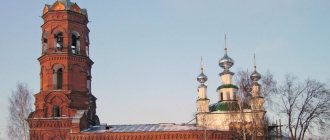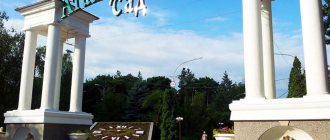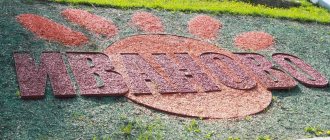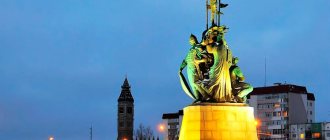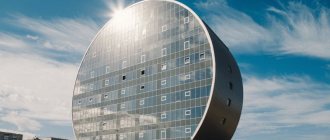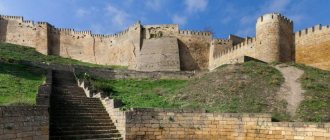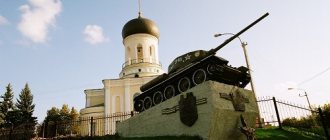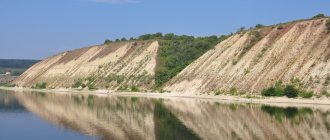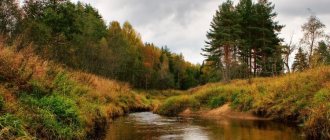How to get to Kronstadt from St. Petersburg
Kronstadt is located on the Kotlin Island of the Neva Bay and previously it was possible to get here only by sea on a ferry that departed from Lomonosov. These days, the good old ferry crossing no longer operates, but Kronstadt can be easily reached by road along the St. Petersburg Ring Road from two directions.
I went from the south side. Already near Kronstadt the road passes through a tunnel.
We leave the Ring Road and almost immediately find ourselves in Kronstadt.
How to get to Kronstadt by public transport? It’s very simple and there are several ways. Here are just a few of them:
- Bus No. 101 from the Staraya Derevnya metro station to Kronstadt departs at intervals of 10-25 minutes.
- Minibus K-405 from the Chernaya Rechka metro station every 10-20 minutes.
- Train from the Staraya Derevnya platform to the Gorskaya railway station, where you change to minibus K-405.
- Train from the Baltic Station to the Kronstadt Colony station, where you change to bus No. 175.
For clarity, look at the route to Kronstadt on the map.
Fort Reef (western tip of Kotlin Island)
Fort Reef is the strongest fortification of the Kronstadt fortress on the territory of Kotlin Island. It includes a unique complex of experimental buildings of an engineering test site, created in 1889–1897, a unique monument to the development of domestic long-term fortification.
Nevskie News / Valeria Petrik
Nevskie News / Valeria Petrik
Nevskie News / Valeria Petrik
In March 2021, the exhibition “They were thrown by their youth onto the Kronstadt ice” was opened at Fort Rif, dedicated to the events of a hundred years ago: the Kronstadt uprising. The exhibition runs throughout 2021 and tells about the tragic events.
Nevskie News / Valeria Petrik
Nevskie News / Valeria Petrik
Nevskie News / Valeria Petrik
Sights of Kronstadt
In general, the sights of Kronstadt, if desired, can be explored in a day, if you do not stay anywhere for a long time. Just in case, I’ll mark them on the map for you.
Interesting places on the map
The map of attractions (marked with blue dots) of Kronstadt is interactive - you can move it by holding the left mouse button and change the scale.
So, let's start in order. Arriving in Kronstadt, I left the car on Martynov Street, opposite Podvodnikov Square, and then walked towards the Obvodny Canal.
Podvodnikov Square
I couldn’t get past Podvodnikov Square. Here is a monument to submarine sailors who defended the approaches to Leningrad during the Great Patriotic War.
Blue Bridge
Further, along Makarovskaya Street, I had to cross the Blue Bridge. The bridge is indeed painted blue. To the left of the bridge is the Obvodny Canal, and to the right is the Italian Pond with access to the Merchant Harbor. Don’t rush to leave this place right away, because here you will see other attractions.
Tire gauge pavilion, Kronstadt water gauge
Right next to the Blue Bridge there is a small tide gauge building that resembles a turret with a spire. The tide gauge pavilion is installed above a 7-meter-deep well connected to the Gulf of Finland.
A tide gauge is a device consisting of two parts - a float and a recorder. A float floats on the surface of the well water, connected to a recorder, which automatically draws a curve of fluctuations in the level of the Baltic Sea.
In addition, the Kronstadt footstock is installed on the bridge - a cast iron rail with divisions. From its zero level, measurements of all depths and heights in Russia have been made since 1840.
I also photographed a sign with the inscription “3.67 m. 1824” installed on the bridge in memory of the most destructive flood in St. Petersburg, which occurred in November 1824.
Memorial sign to the Siege Stickleback
But that's not all. On the wall of the Obvodny Canal, near the Blue Bridge, the memory of the siege stickleback is immortalized.
Thanks to this small and inconspicuous-looking fish, the residents of besieged Leningrad saved their lives. It was caught in the Gulf of Finland in whatever way possible and eaten, despite the fact that stickleback was never a commercial fish species. In addition, fat was obtained from stickleback to treat wounds and burns.
Italian pond
Go ahead. There are cannons on carriages installed right next to the Italian Pond. These guns were in service with the forts and coastal batteries of the Kronstadt Fortress until the mid-19th century. Previously, the Italian Pond was a winter anchorage for ships.
There is also a crane here, with the help of which ship masts were removed from ships and unloaded onto the shore, and in the spring, before the start of navigation, these same masts were installed again on the ships.
Italian Palace
And opposite the Italian Pond is, naturally, the Italian Palace, built in 1720-1724. Its other name is Menshikov Palace. This is one of the oldest buildings in Kronstadt.
Near the Italian Palace there is a monument to the navigator and explorer of Novaya Zemlya P.K. Pakhtusov, a graduate of the Kronstadt Navigation School, which was located within the walls of the Italian Palace from 1798 to 1872.
Petrovsky Canal, Petrovsky Dock and Lighthouse
Well, we will go further, towards the Petrovsky Canal, located between the Kupecheskaya and Petrovskaya harbors. You can walk across the canal or drive along the Dock Bridge.
To the left of the bridge as I move along is the entrance to Petrovsky Dock. This is the first dry dock in Russia, construction of which was completed in 1752.
At the end of the Petrovsky Canal there is a wooden Kronstadt lighthouse. It is also called the Gate Lighthouse. This lighthouse was built in 1888 and is still operational today. There are no tours to the lighthouse. I was only able to photograph it from afar, since the entrance to the pier is limited by a fence.
Here I saw the diesel-electric submarine "Krasnodar" participating in the Navy Day parade in St. Petersburg.
And other ships of the Navy.
Petrovsky Park
Almost immediately from the Dock Bridge we find ourselves in Petrovsky Park, located between Makarovskaya Street and Petrovskaya Harbor. A beautiful park on this site arose thanks to the chief commander of the Kronstadt military port, Bellingshausen F.F., who, having taken office in 1839, set about improving the territory. It is noteworthy that Thaddeus Faddeevich did not attract funds from the sovereign’s treasury for this, but spent his own money.
In 1841, a monument to Peter I was erected on the territory of the park. Since then, the park has been called Petrovsky.
From Petrovsky Park you can go out to the embankment and admire Petrovskaya Harbor.
Summer garden
Not far from Petrovsky Park is the Kronstadt Summer Garden, bordering Petrovskaya Street. The summer garden in Kronstadt was created under Peter I. His house was built here, which, unfortunately, has not survived to this day.
Today's main alley of the Summer Garden was once the very first street of Kronstadt and was called Petrovskaya Perspektiva.
Anchor Square
The Summer Garden turns into the ravine of the Petrovsky Dock, from where we climb the stairs to Anchor Square, where the Naval Cathedral of St. Nicholas the Wonderworker, a monument to Admiral S.O. Makarov, the eternal flame and the Makarovsky Bridge.
What is remarkable about Anchor Square? The cast-iron pavement has been preserved here to this day! From the mid-18th to the end of the 19th centuries, anchors and anchor chains from decommissioned ships were stored in this square. Hence the name of the square - Yakornaya. Later, the square was officially named differently: Divorce Parade Square and Revolution Square.
Naval Cathedral
The Naval Cathedral in Kronstadt was founded in 1902. From June 1913, when the Cathedral was consecrated in the presence of Tsar Nicholas II, until 1929, services were held here. In 1932, the Bolsheviks officially closed the Cathedral and began to use it at their own discretion. Namely, in different years of Soviet power, the Cathedral housed a club, a cinema, a hospital, a museum and even a theater.
In 2008, restoration of the Naval Cathedral began. In 2012, Patriarch Kirill consecrated the Cathedral, and on May 28, 2013, the official opening after restoration and the great consecration took place.
Watch a short video about what the Naval Cathedral looks like inside. I think it's very beautiful and impressive.
Monument to Admiral S.O. Makarov
Bronze sculpture of Makarov S.O. created by Shewood L.V. in 1913. The monument immortalizes various episodes from the life of the famous admiral, as well as his unforgettable words: “Remember the war.”
Makarovsky Bridge
The Makarovsky Bridge was erected in 1913 just before the opening of the Naval Cathedral so that Tsar Nicholas II and his retinue could go to Anchor Square from the pier and be present at the consecration of the Cathedral.
There is a legend according to which Nicholas II at first did not dare to cross the ravine on the bridge. Apparently the design of the bridge did not seem entirely reliable to him. Then one of the officers present volunteered to go forward and marched across the bridge at a marching pace, for which he was immediately awarded by the Tsar a medal for a brave deed!
The bridge was assembled at the Kronstadt Steamship Plant. Under Soviet rule, the bridge had a different name - Red, as did the street with which it connected Yakornaya Square.
Petrovsky Park
Address: In the square bounded by the street. Makarovskaya, Arsenalny lane. and the Petrovsky dock canal
Panoramic view of the park from the pier:
It was founded in the nineteenth century by the governor of Kronstadt F.F. Bellingshausen, who was concerned about the appearance of the city. The governor did not like the continuous streets and the dirt on them, and he personally took up the task of landscaping. Having cleared the swamp adjacent to the shore of the bay, he himself selected seedlings and thought through the plan for the future park “in Dutch calm.”
The center of the park was the monument to Peter the Great, and its end was the Winter Marina, from which you can still see the powerful ships of the Baltic Fleet.
In addition to these attractions in Petrovsky Park you will see:
- Stone vases from 1882
- Cannons and cannonballs from the ship "Emperor Paul I"
Kronstadt museums, excursions
After walking around Kronstadt, do you still have the strength and desire to expand the cultural program? Then the museums of Kronstadt are at your service. Here I will only list them and provide links to relevant information resources.
Museum-apartment of Saint Righteous John of Kronstadt
Opening hours: daily, except Tuesday, from 12:00. until 17:00 (for single visitors). Address: St. Petersburg, Kronstadt, st. Posadskaya, 21/12. Phone, 311-87-02. Website: https://leushino.ru/kvartira/index.html.
Kronstadt Maritime Museum
Opening hours: Wednesday, Friday, Saturday, Sunday from 11:00. until 18:00 (Free admission). Address: St. Petersburg, Kronstadt, st. Andreevskaya, 5, 2nd floor. Tel./fax, +7 (921) 918-10-42 (order excursions). Website: https://www.fertoing.ru/museum.
Museum of the History of Kronstadt
Opening hours: in summer - daily from 11:00. until 18:00 and in other seasons - every day, except Wednesday. Address: St. Petersburg, Kronstadt, Yakornaya square, 2a and st. Leningradskaya, 2 (exhibition of underwater archeology). Tel.,. Website: https://www.visitkronshtadt.ru/.
Cabinet-museum of A.S. Popova
Opening hours: daily from 10:00. until 17:00, except Thursday and Sunday. Address: St. Petersburg, Kronstadt, st. Makarovskaya, 1. Tel..
If you prefer organized excursions, you can book and buy a tour of Kronstadt on the WeAtlas portal.
Book an excursion to Kronstadt
Kronstadt forts
Everything listed above is not everything. I think that in order to get a complete picture and a complete understanding of Kronstadt, one cannot do without visiting the forts located around Kotlin Island.
A boat tour of the forts can be taken by ferry from the Winter Pier pier in Petrovskaya Harbor.
The ticket office has complete information about the ferry schedule and the cost of the excursion.
In addition, you can book a tour of the Kronstadt forts on the unusual excursions website Tripster. Or here you can choose other excursions around Kronstadt to your liking.
These are the sights of Kronstadt you can see in one day. In addition to the historical and memorable places of this or that city, I really like to walk along ordinary streets and see its everyday life. I didn’t ignore Kronstadt in this sense, but that’s a completely different story, which is called “the streets of Kronstadt.”
Petrovsky dock
Address: Petrovsky Dock Canal
View of the dock from Makarovskaya Street:
A monument to the mind and ingenuity of Peter the Great. Built for quick repair of ships entering the port. Letters from Dutch engineers have been preserved. Peter set them the task of designing a dry dock, from which water could be pumped out in less than a month. In their letters, the Dutch touchingly fantasize about steam pumps that have not yet been invented, capable of fulfilling the sovereign’s task, but classify them as unrealistic theorizing. Peter solved the problem radically: using the manpower of captured Swedes and peasants, he created a dock, the water from which flowed into a lake located below the dock level.
The project expanded and dragged on: a canal was dug, a wind tower-water pump was built. Peter did not see his docks ready; construction was completed after his death. But the dock, drained in less than a month, with a capacity of ten ships, served sailors for another 75 years before the invention of the steam pump.
City `s history
The island itself has been familiar to the residents of Novgorod since ancient times, but gained universal fame in 1703, when, by decree of Peter I, a fort was founded, designed to protect the new capital of the Russian Empire and its western borders. In 1723, the construction of the fortification was completed, and it was given the name Kronstadt, after which the city itself began to be called. The Emperor considered it part of St. Petersburg and paid special attention to the construction and development of the city. The most famous architects of that time were involved as developers: Trezzini, Bazhenov, Cameron, Chevakinsky.
Kronstadt confirmed the title of a defensive bastion in 1854, stopping the Anglo-French ships trying to approach St. Petersburg. Over the course of several decades, the bastion actively grew, was modernized with the latest military technology, and by the beginning of the 20th century there were 17 fortified islands. At the same time, Kronstadt became the country's largest port and an important shipbuilding hub.
During the Great Patriotic War, the fort was under siege. Kronstadt had no easier time than Leningrad. But even when surrounded by enemies, the ship repair base continued to operate in the city and ensured that submarines could go to sea.
Nowadays everyone can visit Kronstadt, but this was not always the case. The city was opened to the general public only in 1996, after the inclusion of key locations of the island on the UNESCO heritage list.
Interesting Facts
- Kotlin Island did not always belong to Russia. It was in the possession of Sweden, but Peter I, understanding the importance of its location, did the impossible - in a few months he built a fort, through which not a single enemy ship could break through. The Swedes also failed to return Kotlin to their possessions. After making several attempts, they were forced to recognize the superiority of the Russian fleet and retreat.
- According to legend, while retreating from the fort, Swedish troops left a hot pot with delicious food, which was discovered by Peter I. Thus, the island got its name - Kotlin.
- More than 40 expeditions around the world were sent from Kronstadt and 56 large-scale geographical discoveries were made.
- In 1874, a major fire destroyed more than half of the city. This sad moment is depicted by Alexey Bogolyubov in a painting, which can be viewed at the Museum of Fine Arts of the Republic of Tatarstan or on their official website.
- On Anchor Square there is the only pavement in the world made of cast iron blocks. Unfortunately, only a small part of it has reached us.

